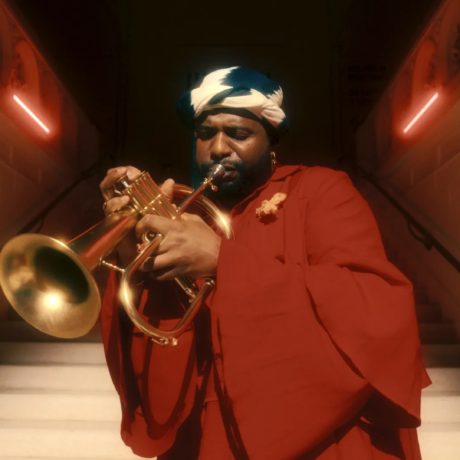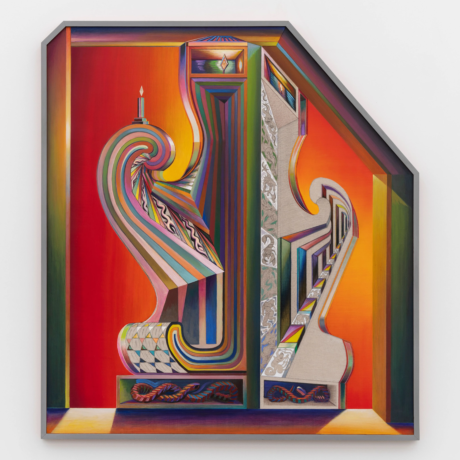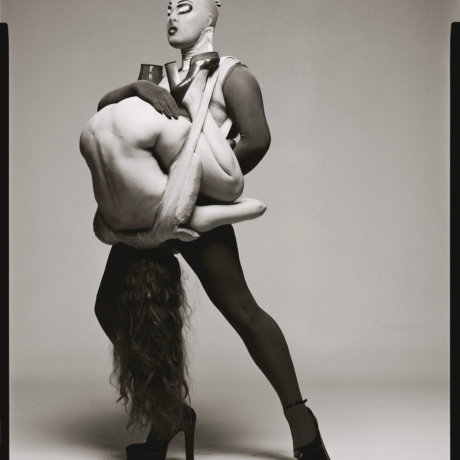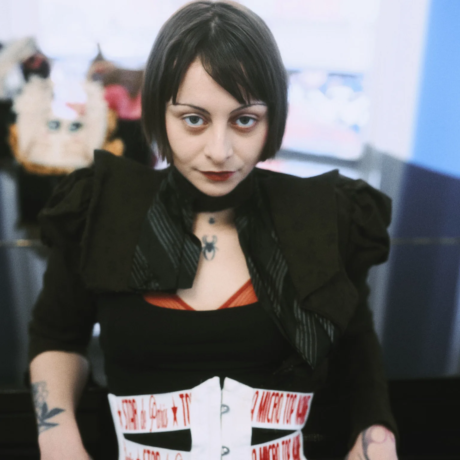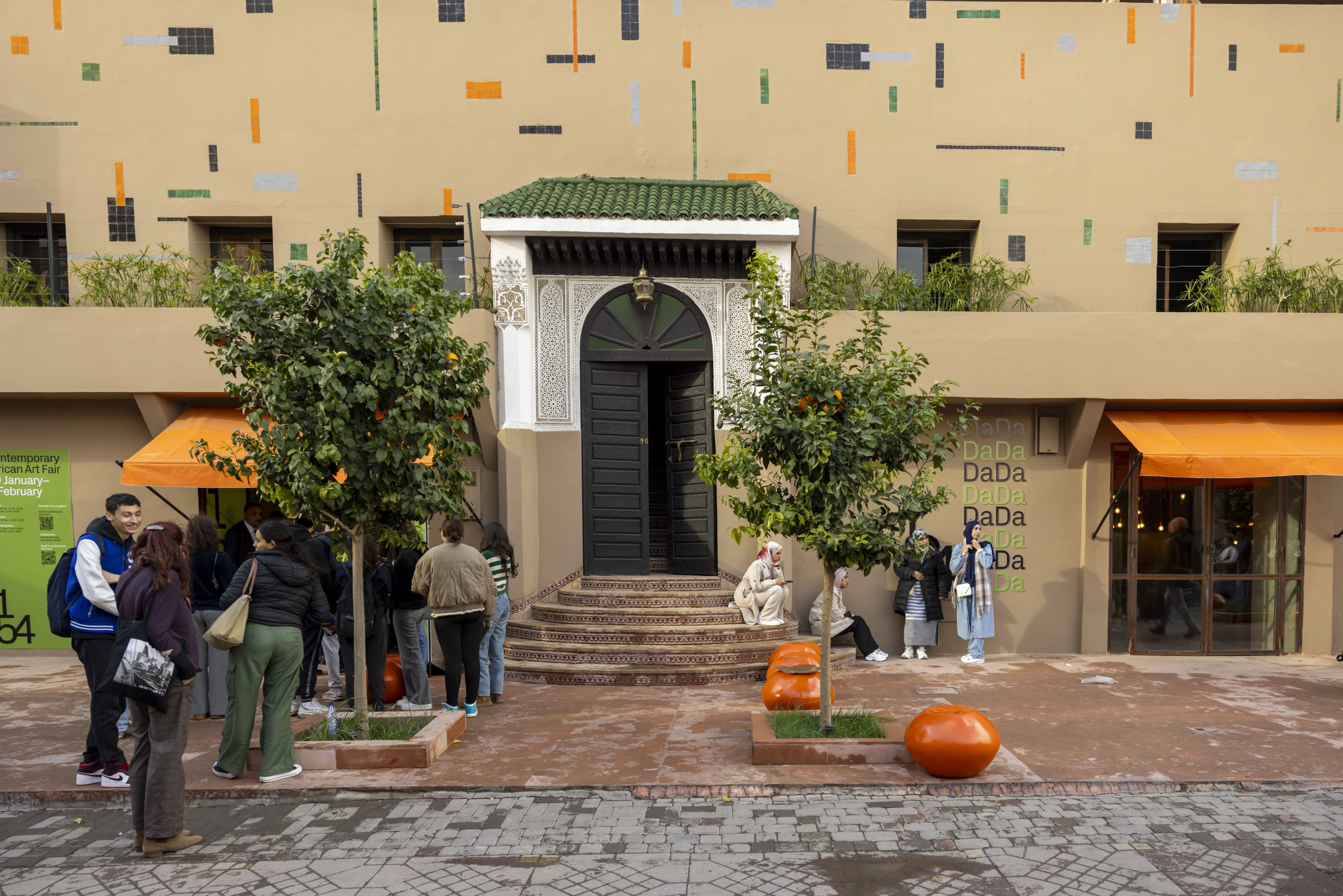
This year’s edition of 1-54 Contemporary African Art Fair in Marrakech featured more than 30 galleries from 15 countries, with 15 from the African continent. Below, Gazelle Mba reflects on her time at the fair.
Marrakech is sometimes known as the Red City—the warmer counterpart to Chefchaouen in the Rif mountains of Morocco, referred to as the Blue City. It’s clear from these appellations that Moroccans have a deep affinity for colour; a particularly charming trait for anyone stepping off the plane from cold, grey London, who has spent far too many days staring at brick walls. It’s easy to get distracted here, by the sheer profusion of colour or get lost in the city’s busy streets with its bounty of shops and restaurants, even when the purpose of your visit is clear: to visit 1-54 Contemporary African Art Fair.
Founded in 2018, the 1-54 Contemporary African Art Fair has played a key role in raising Marrakech’s profile as an art city, shifting its reputation beyond that of a tourist hub. And this shift is palpable, one of the first things you notice about the city is how it seems designed to satisfy a febrile Western imagination of what the Arab world is: glowing ‘Kech’ signs in soulless international fonts are softened by the presence of the fair, the way it seems to add an aesthete’s flair into the touristic landscape. Now in its sixth edition, 1-54 is part of a larger ecosystem of artists, galleries, and museums, some new and others more established, that are collaborating to make the city a centre of the global art scene.
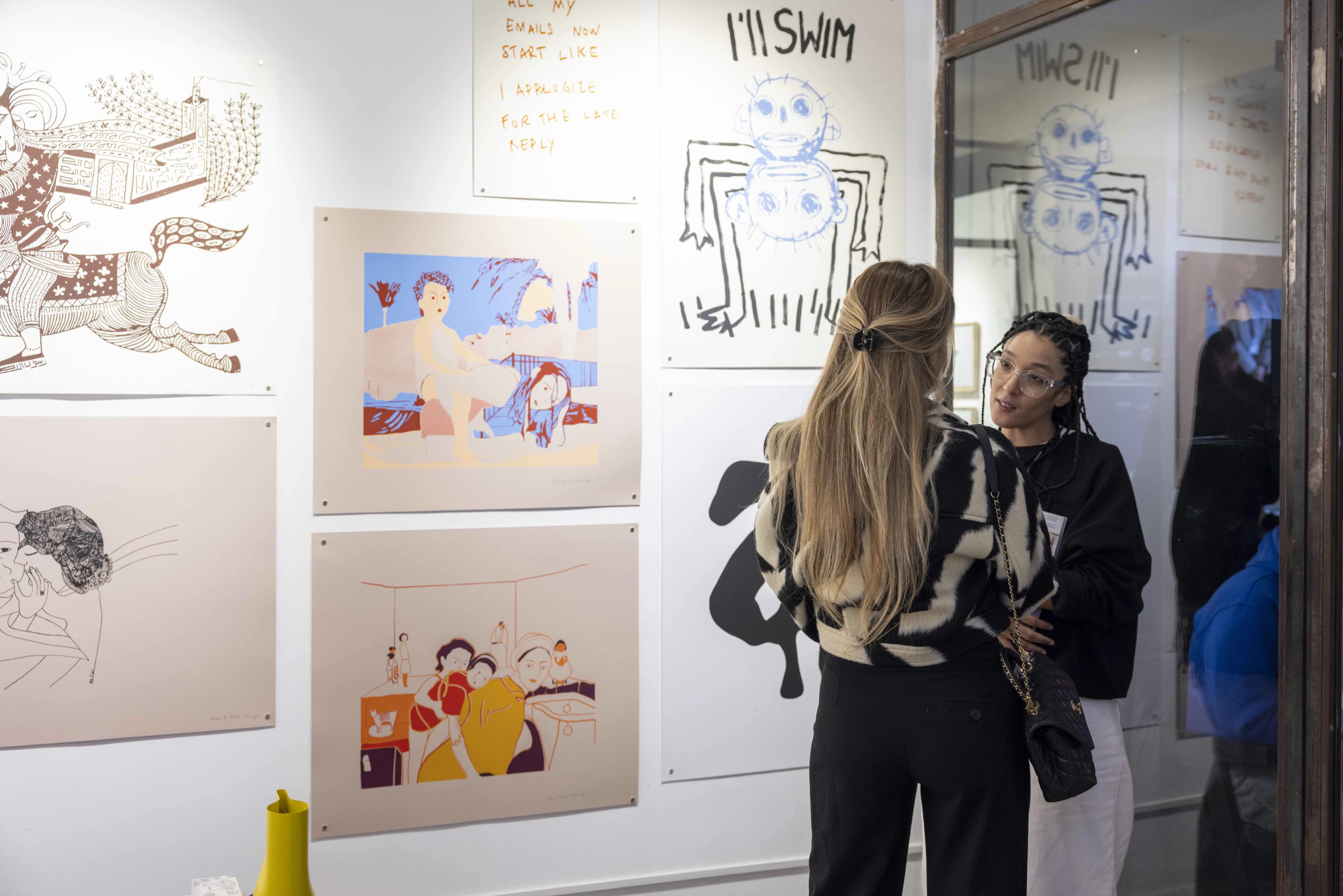
1-54 is spread across two sites: La Mamounia, along the famed Bab Jdid avenue, and DaDa, an art space in Jamaa el-Fna. This marks the second year of partnership between DaDa Marrakech and 1-54, reflecting the growing connections between Moroccan art institutions and international collectors. These dual venues offer visitors a glimpse into two distinct yet complementary sides of Marrakech. La Mamounia, with its grandiose elegance, serves as a stately backdrop for the acquisition of African art.
Opened in 1929, the hotel has long been a sanctuary for dignitaries and celebrities alike, which lends an air of glamour and prestige to the fair and its attending programme. In contrast, Dada marrakech embodies the city’s youthful energy- modern, dynamic and experimental. Located in Jemaa el-Fna square, fondly referred to as the city’s heartbeat, it’s the kind of place a Moroccan would guide you towards if they wanted a visitor to get an authentic feel for the city. Dada is housed in a reimagined modernist space that was a bus station in a previous life, its former functionality appended to the whimsical and ornate uses in the present. It is a hybrid space, part art gallery, bookshop and restaurant.
1-54’s dual presence speaks to both its engagement with Marrakech’s history of exemplary architecture and hospitality and its rapidly expanding contemporary gallery scene. Casablanca, Rabat and Tangiers have been better known to the art crowd for contemporary art galleries that have attracted audiences for decades, and now many international galleries are opening second locations in Marrakech, with established Moroccan galleries creating a home for themselves in the red city. Casablanca-based institutions like Galerie 38 and Loft Art Gallery have spaces in Gueliz district, a modernist neighbourhood flanked by tree-lined boulevards and cloistered garden suburbs. Located on Avenue Mohammed V is Galerie 127, where on the first floor of an art-deco apartment block you can see works by renowned African photographers Daoud Aoulad Syad and Denis Dailleux. Across the city in the Museum of African Contemporary Art Al Maaden one can find Syad’s photography exhibited alongside West African luminaries Sanlé Sory and James Barnor. And this, of course, is the pleasure of Marrakech, the manner in which so much of African art history is spread across the city’s expanse.
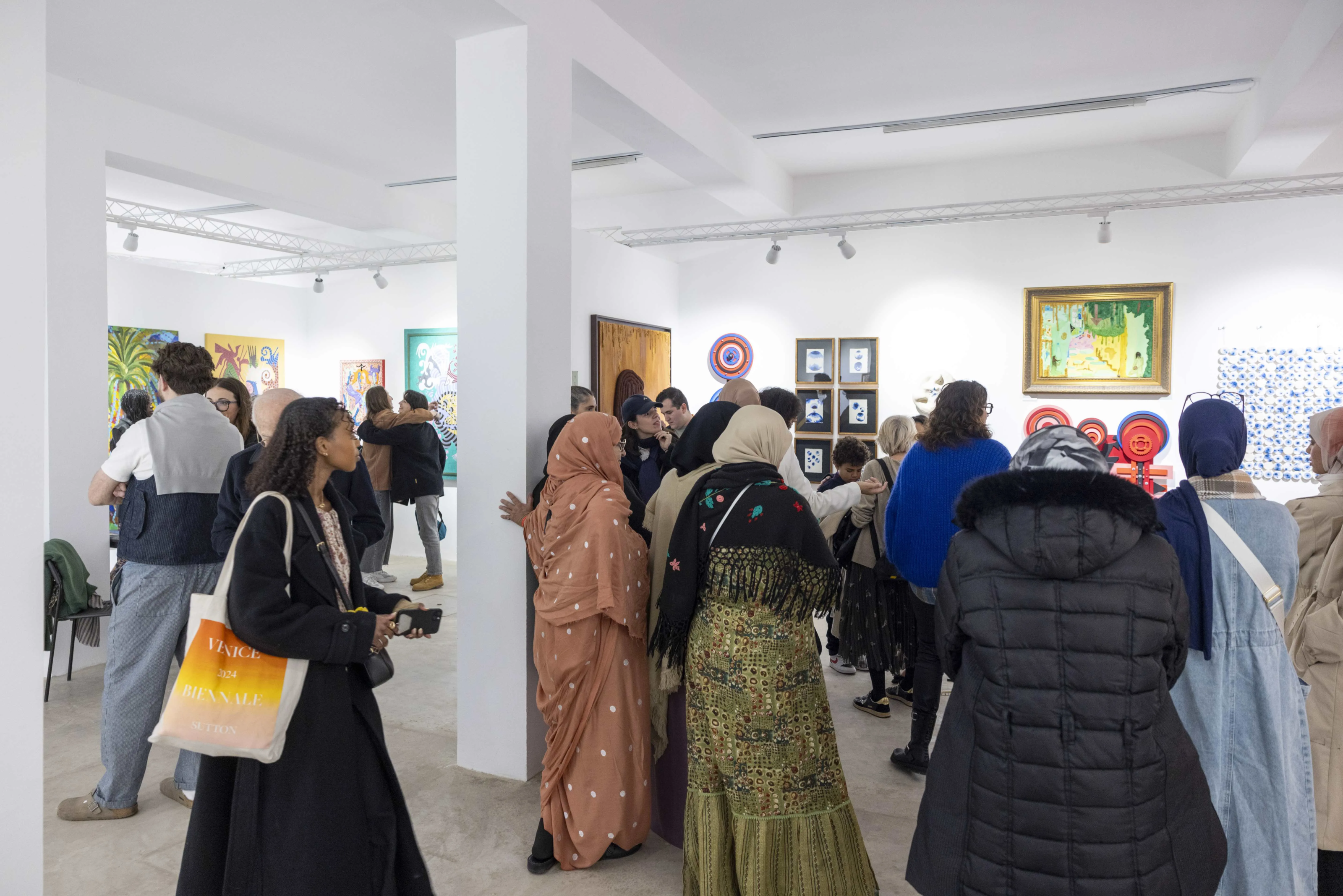
The Museum of African Contemporary Art Al Maaden (MACAAL), one of only two museums dedicated to contemporary African art on the continent, reopened in February 2025 after extensive renovations. Its inaugural exhibition, “Seven Contours, One Collection,” showcased work from over 150 artists drawn from the collection of its founder, Othman Lazraq which spans thousands of works. The alignment of MACCAL’s reopening and 1-54 another example of the city’s art denotes the winning marriage of legacy, as embodied in the museum’s collection, with the innovations and quick pace of the contemporary gallery scene.
This year’s edition of 1-54 featured more than 30 galleries from 15 countries, with 15 from the African continent. Many exhibitors were first-time participants, bringing works never before seen in Morocco. The fair’s power lies in its ability to present African artists within a broader yet cohesive framework. Seeing Chigozie Obi’s Shades of Black, a body of work exploring representation and social stereotypes in Lagos, in the same venue as Roland Dorcely’s Sans Titre (Leaving the Bath), a key figure in Haitian modern art, acknowledges both the historical continuity and disruption of African and Afro-diasporic artistic traditions. Obi’s painting of a girl stepping into a pool among friends is given a distant echo in Dorcely’s nude bather- two distinct yet connected meditations on the female body in art history.
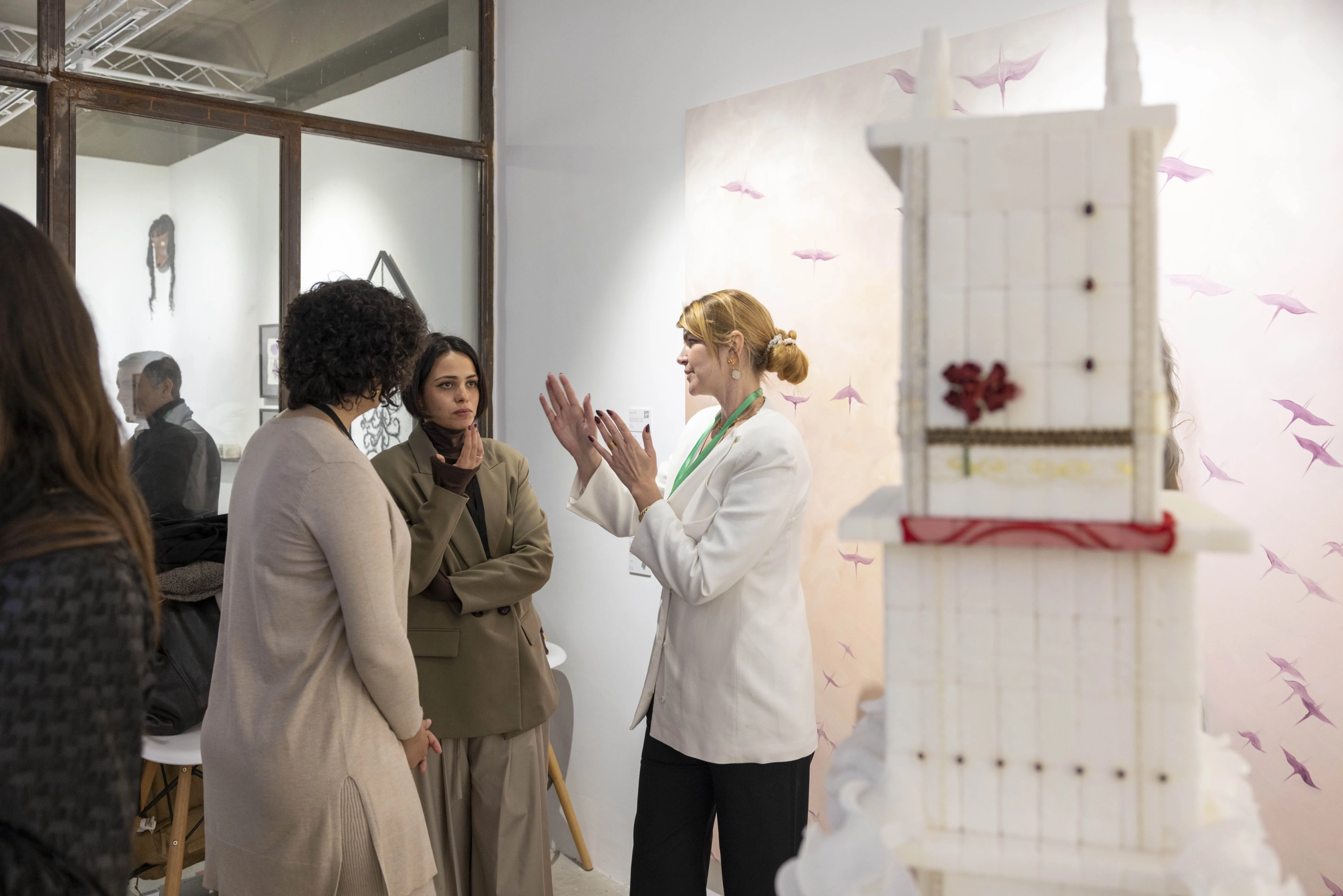
Originally launched in London before expanding to New York, 1-54 has always kept the continent in mind, a homecoming was a natural progression. And collecting African art in the continent carries a greater significance. This notion is underscored by key acquisitions: Ghanaian artist Amoako Boafo’s Blank Stare was selected at 1-54 Marrakech by Gregor Muir, Director of Tate’s Collection, and Osei Bonsu, Curator of International Art. This acquisition joins the over 58 works by 42 artists that the Africa Acquisitions Committee has helped Tate acquire since 2011. Tate’s commitment to supporting artists from Africa and the diaspora as expressed by Muir and Bonsu, is emphasised by their presence in Marrakech. It is a statement on the possibilities of African artists flourishing within the international art world while remaining rooted in the continent.
From its first VIP opening, 1-54’s aisles were filled to the brim with curators, collectors and critics. Dada was equally packed, particularly its adjacent bookstore drawing the bibliophiles among the art crowd. Of note is the presence of and encouragement of Black collectors, which cannot be said for all art fairs. But regardless, these numbers attest to the growing appetite for contemporary African art.. This demand was evident at Loft Art Gallery, which had sold nearly everything in its booth by early afternoon, including Bouchra Boudoua’s ceramic work for €8,000, paintings by Nassim Azazar for €5,800 each, and a textile piece by Amina Agueznay for €15,000. Agueznay’s biomorphic, spiky works particularly stood out.. Her pieces, often made from wool and ornamental materials, experiment with scale and volume, adding a striking textural dimension to the fair. It was impossible not to stop by their booth and marvel at the biomorphic form.
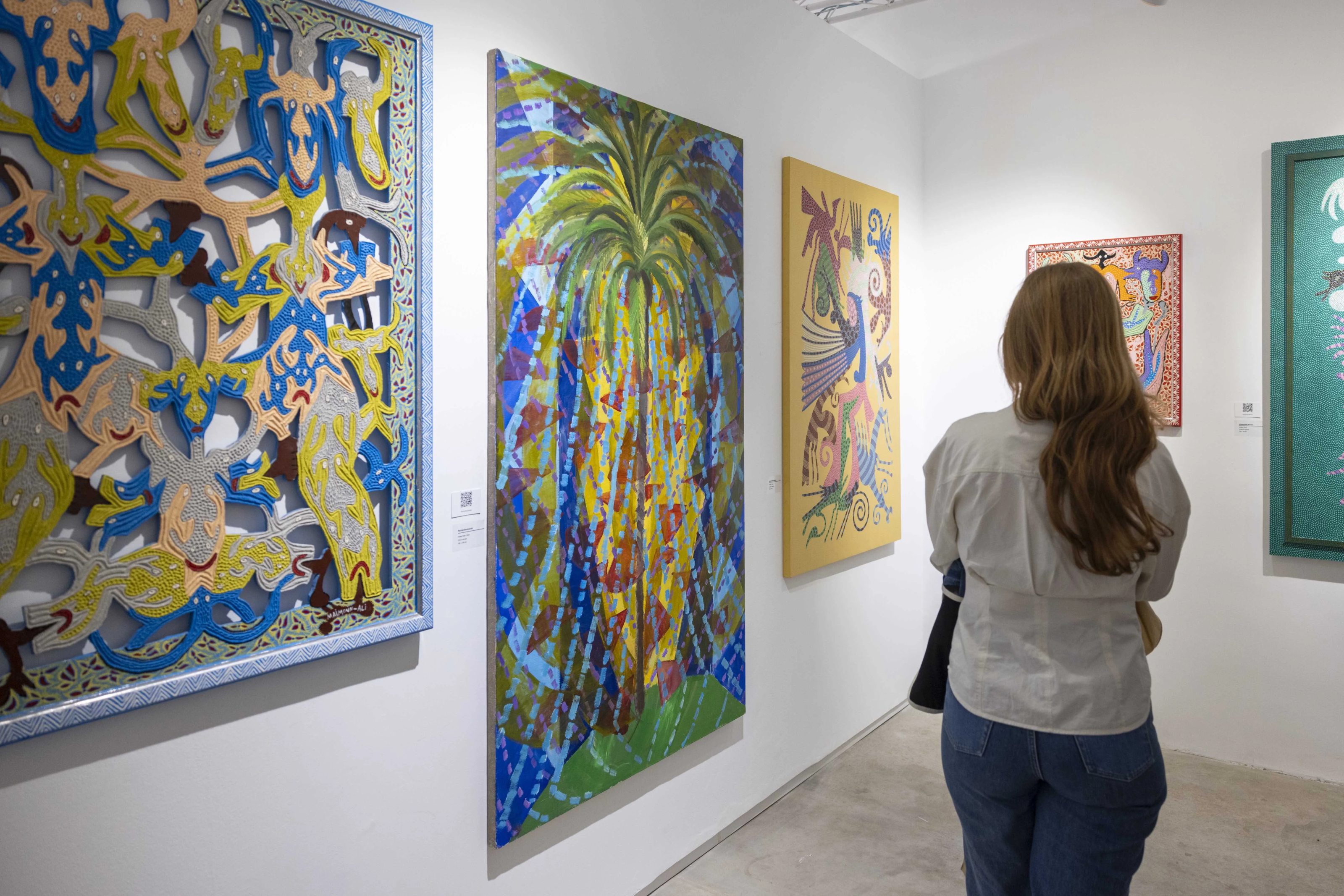
Apart from the sales, what is most impressive about 1-54 is the way it permits African artists to simply be themselves. There is no generic or singular definition of African art foisted on participating artists, galleries or visitors. In its place is a compendium of works, most notable for its aesthetic diversity. If there is a thorough line it is the assertion of national identity that ran through certain booths: take the Tunisian gallery Le Violon Bleu which displayed gouache works of Aly Ben Salem, a pioneer of the Tunis School, alongside paintings by Baya a famed Algerian painter whose works depict surreal, child-like imagery and was favoured by the likes of Picasso and Andre Breton. 1-54 takes viewers back into African art history, showcasing the modern while also lauding the contemporary. It is able to do both, as easily as it deepens connections between emerging local and established international art scenes. It’s setting in Marrakech, the piece de resistance.
Written by Gazelle Mba

